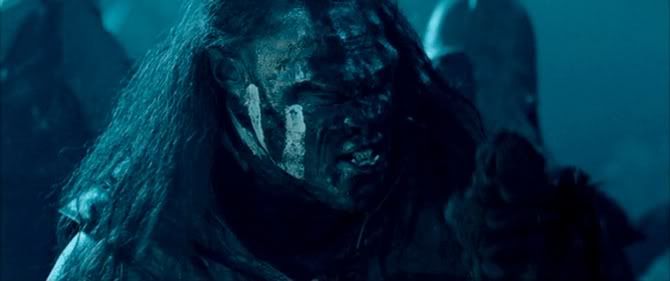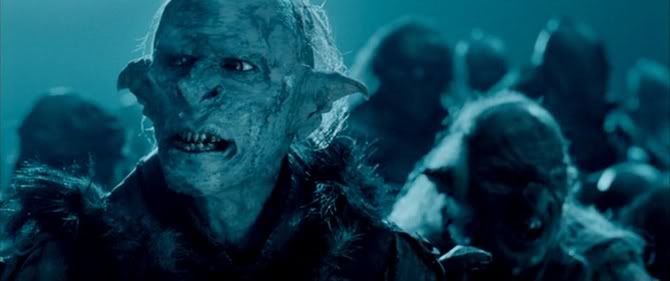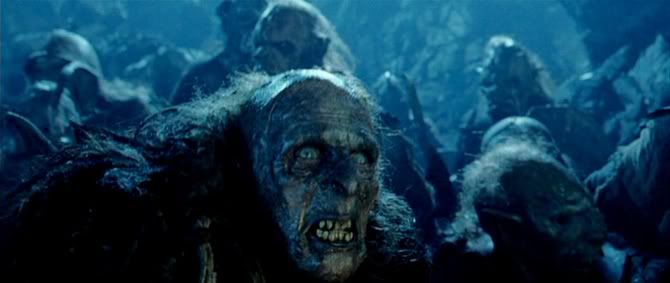
Xanaseb
Tol Eressea

Oct 1 2012, 11:18am
Views: 640
|
1. Probably the biggest concern about the orcs in Two Towers was how they evolve from faceless creatures to a full fledged society. Do you find their transition disconcerting, given how they were represented in Fellowship? Is this a convincing society, or is it over-brutalized?
I don't find it disconcerting, mainly because in the Fellowship the orcs shown were Goblins for the most part, who indeed have a less ordered (if that's the right word!) society. I think it is convincing entirely; Orcs simply are that brutal!! Very imaginable.
2. As an addition to the prior question, the humans never seem to hear the orcs speak. Does this give the impression that only Hobbits can understand the creatures? Was this deliberate?
Hmmmm this is a great point. I think that it is just that we did not get much of an opportunity to see the non-hobbits converse with Orcs (... because they're busy killing them ...)
3. Look at the orcs around the ones in focus. How are orcs represented as a race and do you think the different breeds of orc here help establish a wide range of visual features that determine an orc or Uruk-hai? Does this assist their appearance in Return of the King?
I'd say that there are very distinct differences established between Orcs and Uruk-hai here (skin tone, body and facial structure (angled / less angled), hair (and lack of), armour)
However, it does not entirely assist their appearance in Return of the King, as of course the Saruman contingent is non-existent. Plus, the Orcs of Mordor shown in Film 3 are for the most part tough well bred Orcs, who are greater in stature. There are parts of RoTK however where Uruk-Hai - Orc separation onec more comes into play (thinking of Cirith Ungol especially with Shagrat and Gorbag)
4. I chose shots somewhat at movement so that we may observe the versatility of the make-up at work here. Does it look convincing? What are the orcish visual traits here and what would you do to improve them and bring them closer to your imagination?
I think it looks very convincing, perfect IMO. Nothing I'd do to improve them. I suppose before I saw the films I had imagined them to be more green-skinned (though that might be down to Warhammer), and I had also for some reason imagined them as looking akin to dark and demented Tusken Raiders (that's probably down to The Bakshi version of the 70s (I liked that design))
5. Any additional thoughts about the orc episode is encouraged!
They're awesome in this scene, really awesome
Bonus Question: Which orc here is voiced by Andy Serkis?
all of them I think!!
*then looks at other posts after posting*
Join us over at Barliman's chat all day, any day!
__________________________________________
--I'm a victim of Bifurcation--
__________________________________________
|








 But that's just me. I know a lot of people really liked the orcs.
But that's just me. I know a lot of people really liked the orcs. 






 Even the simple hissed whisper of "Shire...Baggins" works because it makes the Raith seem so single-minded. And, yes, gliding heedlessly past Butterbur shows how otherworldly they are.
Even the simple hissed whisper of "Shire...Baggins" works because it makes the Raith seem so single-minded. And, yes, gliding heedlessly past Butterbur shows how otherworldly they are. 

